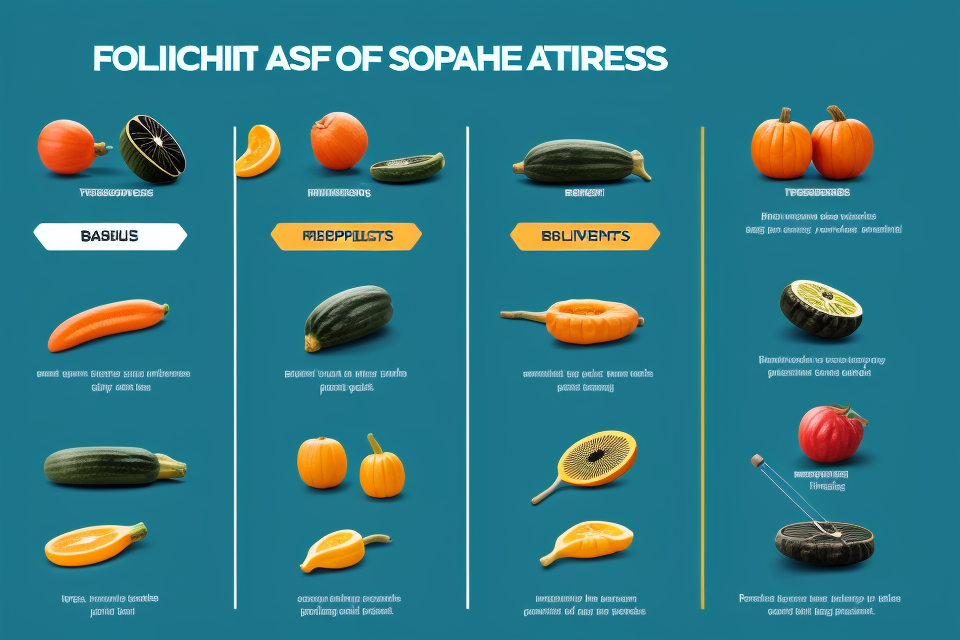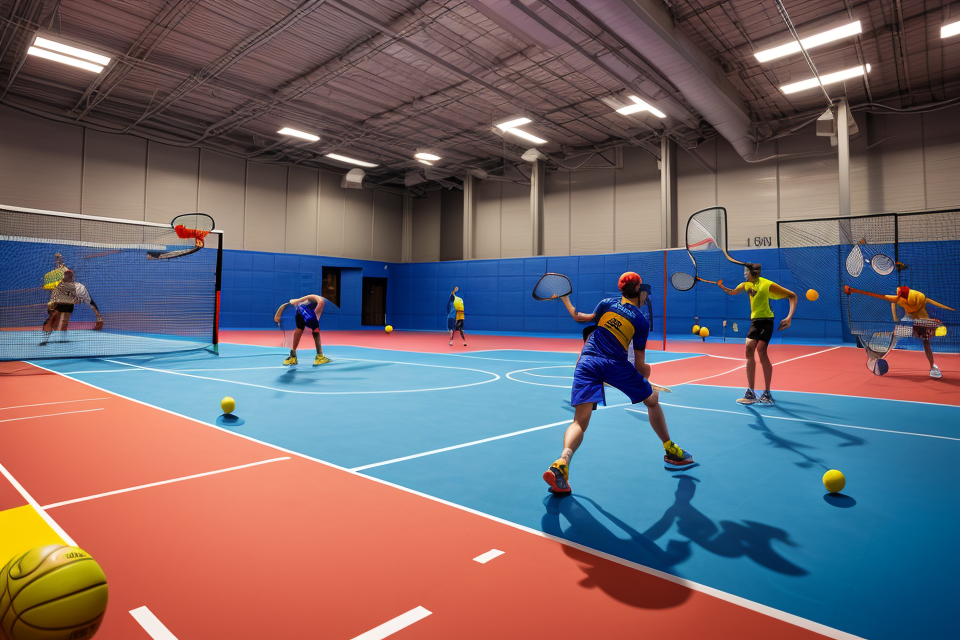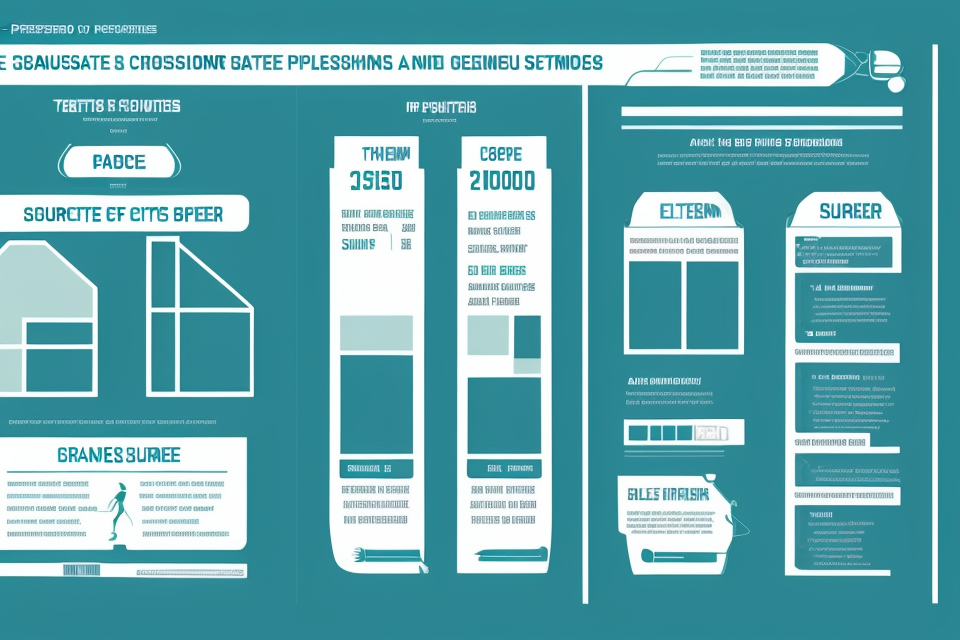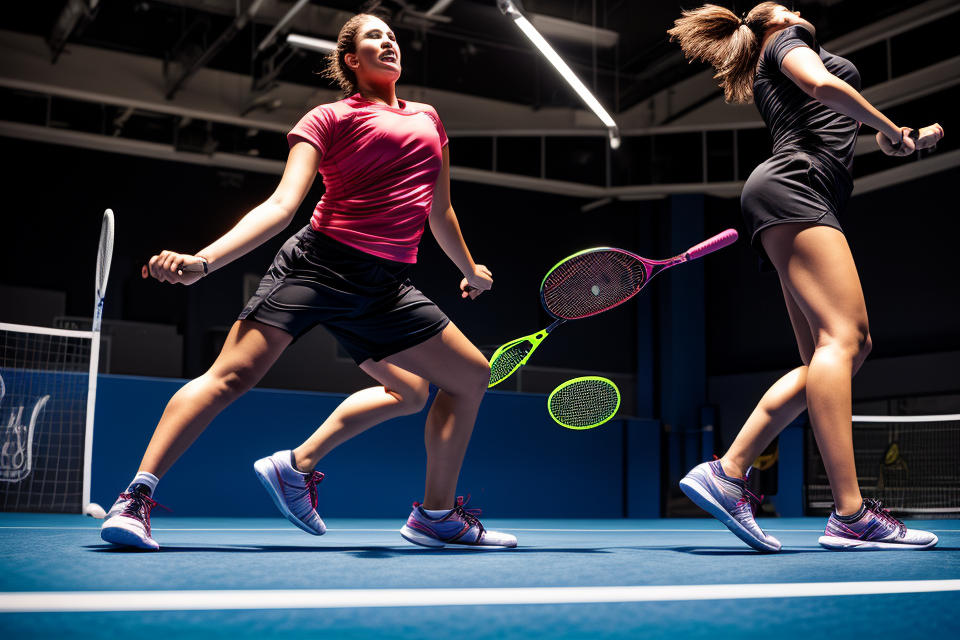Squash is a high-intensity racquet sport that demands speed, agility, and precision from its players. To excel in this sport, you need the right equipment, and that starts with choosing the right squash racket. But with so many different types of squash rackets on the market, how do you know which one is right for you? In this article, we’ll explore the various types of squash rackets and their unique features, so you can make an informed decision and take your game to the next level. Whether you’re a beginner or a seasoned pro, this guide will help you find the perfect squash racket to suit your playing style and enhance your performance on the court.
Understanding the Basics of Squash Rackets
Factors to Consider When Choosing a Squash Racket
When choosing a squash racket, there are several factors to consider in order to find the right one for your playing style and preferences. These factors include:
- Grip size: The grip size of a squash racket is an important factor to consider as it affects the control and maneuverability of the racket. A smaller grip size may provide more control, while a larger grip size may offer more power.
- Weight: The weight of a squash racket can impact the speed and control of the racket. A heavier racket may offer more power, while a lighter racket may provide more speed and maneuverability.
- Length: The length of a squash racket can affect the reach and control of the racket. A longer racket may offer more reach, while a shorter racket may provide more control.
- String tension: The string tension of a squash racket can impact the power and control of the racket. A higher string tension may offer more control, while a lower string tension may provide more power.
- Material: The material of a squash racket can affect the weight, durability, and performance of the racket. Different materials may offer different levels of power, control, and stability.
By considering these factors, you can find a squash racket that is well-suited to your playing style and preferences, and that will help you perform at your best on the squash court.
Types of Squash Rackets
Squash rackets come in different types, each designed to suit specific playing styles and skill levels. In this section, we will discuss the four main types of squash rackets: power squash rackets, control squash rackets, all-round squash rackets, and recreational squash rackets.
- Power Squash Rackets
Power squash rackets are designed for players who rely on their strength and power to dominate the game. These rackets have a larger head size and a more open string pattern, which allows for greater power and ball speed. Power rackets are typically heavier than other types of rackets, which adds to their power and control. However, they may be more difficult to maneuver and control, especially for players with less experience.
- Control Squash Rackets
Control squash rackets, on the other hand, are designed for players who prioritize precision and accuracy over power. These rackets have a smaller head size and a tighter string pattern, which allows for greater control and accuracy. Control rackets are typically lighter than power rackets, which makes them easier to maneuver and control. However, they may not provide as much power and ball speed.
- All-Round Squash Rackets
All-round squash rackets are designed for players who want a balance between power and control. These rackets have a medium head size and a moderate string pattern, which allows for a good balance between power and control. All-round rackets are typically neither too heavy nor too light, which makes them easy to maneuver and control. They are suitable for players of all skill levels, from beginners to advanced players.
- Recreational Squash Rackets
Recreational squash rackets are designed for players who are new to the game or who play for leisure. These rackets have a smaller head size and a tighter string pattern, which allows for greater control and accuracy. They are typically lighter than other types of rackets, which makes them easy to maneuver and control. Recreational rackets are less expensive than other types of rackets and are suitable for casual play.
In conclusion, the type of squash racket you choose will depend on your playing style, skill level, and preferences. Whether you prefer power, control, or a balance between the two, there is a squash racket designed to suit your needs.
The Anatomy of a Squash Racket
Head
When it comes to squash rackets, the head is the most critical component. It is the part of the racket that comes into contact with the ball during play, and it is responsible for generating power and control. In this section, we will discuss the different aspects of the squash racket head, including its shape, material, and string pattern.
Shape
The shape of the squash racket head is an essential factor to consider when choosing a racket. There are three main shapes of squash racket heads: oval, round, and teardrop.
- Oval shape: Oval-shaped racket heads are the most common and versatile shape. They provide excellent control and maneuverability, making them suitable for players of all skill levels.
- Round shape: Round-shaped racket heads are more forgiving than oval-shaped heads, and they provide more power. They are suitable for players who want to hit harder and straighter shots.
- Teardrop shape: Teardrop-shaped racket heads are the most recent innovation in squash racket design. They combine the control of an oval shape with the power of a round shape. They are suitable for players who want to hit hard and accurately.
Material
The material used to make the squash racket head is also an essential factor to consider. The most common materials used are:
- Graphite: Graphite is a lightweight and durable material that provides excellent strength and stiffness. It is also an excellent material for absorbing vibrations, which can help reduce hand and wrist fatigue during play.
- Titanium: Titanium is another lightweight and durable material that provides excellent strength and stiffness. It is also an excellent material for absorbing vibrations, which can help reduce hand and wrist fatigue during play.
- Kevlar: Kevlar is a strong and lightweight material that provides excellent durability and stiffness. It is also an excellent material for absorbing vibrations, which can help reduce hand and wrist fatigue during play.
String pattern
The string pattern of a squash racket head is also an essential factor to consider. The string pattern determines the amount of string that is used on the racket, which can affect the power and control of the shots. The most common string patterns used are:
- 16×16: This string pattern is the most common and versatile pattern. It provides excellent control and maneuverability, making it suitable for players of all skill levels.
- 18×16: This string pattern provides more power than the 16×16 pattern. It is suitable for players who want to hit harder shots.
- 18×18: This string pattern provides even more power than the 18×16 pattern. It is suitable for players who want to hit the hardest shots.
In conclusion, the head of a squash racket is a critical component that affects the power and control of the shots. When choosing a squash racket, it is essential to consider the shape, material, and string pattern of the head to find the right balance of power and control for your playing style.
Handle
The handle of a squash racket is an essential component that provides the player with a comfortable grip and control over the racket during gameplay. It is the part of the racket that the player holds, and it affects the player’s ability to maneuver the racket and hit the ball accurately. Here are some of the key aspects of the handle of a squash racket:
- Length: The length of the handle can vary depending on the player’s preference and playing style. A longer handle can provide more leverage and power, while a shorter handle can offer more control and maneuverability. Some players prefer a longer handle for hitting powerful shots, while others prefer a shorter handle for quick movements and precise shots.
- Grip size: The grip size of a squash racket handle is typically measured in inches or centimeters. A smaller grip size can offer more control and precision, while a larger grip size can provide more power and leverage. Some players prefer a smaller grip size for quick movements and precise shots, while others prefer a larger grip size for hitting powerful shots.
- Material: The material of the handle can affect the player’s grip and control over the racket. Some handles are made of wood, which can provide a comfortable and natural grip, while others are made of composite materials, which can offer more durability and resistance to wear and tear. Some players prefer wooden handles for their traditional feel and comfort, while others prefer composite handles for their durability and performance.
In summary, the handle of a squash racket is an important aspect that can affect the player’s grip and control over the racket. The length, grip size, and material of the handle can vary depending on the player’s preference and playing style, and choosing the right handle can make a significant difference in the player’s performance on the court.
Throat
Function
The throat of a squash racket refers to the part of the frame that connects the handle to the head. It plays a crucial role in the racket’s overall performance by providing stability and control. The shape and size of the throat can affect the racket’s maneuverability and the accuracy of shots.
The material used in the construction of the throat can impact the racket’s durability and strength. The most common materials used for the throat include aluminum, titanium, and carbon fiber. Aluminum is a lightweight and affordable option, while titanium offers a more durable and flexible choice. Carbon fiber is the most expensive option but provides the greatest strength and stiffness.
Tips for Choosing the Right Squash Racket
When it comes to choosing the right squash racket, there are several important factors to consider. By taking the time to evaluate your own playing style and preferences, you can find a racket that will help you perform at your best on the court. Here are some tips to keep in mind as you shop for your next squash racket:
Consider your playing style
One of the most important factors to consider when choosing a squash racket is your playing style. If you are an aggressive player who likes to hit hard and fast, you may prefer a racket with a larger head size and a more powerful frame. On the other hand, if you are a defensive player who likes to control the pace of the game, you may prefer a racket with a smaller head size and a more maneuverable frame.
Determine your strengths and weaknesses
Another important factor to consider is your own strengths and weaknesses as a player. If you have a strong backhand but struggle with your forehand, you may want to choose a racket that is better suited for your dominant hand. Similarly, if you have a tendency to hit the ball off-center, you may want to choose a racket with a larger sweet spot to help you make more consistent contact.
Try out different rackets before making a purchase
When shopping for a new squash racket, it is important to try out different options before making a purchase. Many sports stores and squash clubs offer demo rackets that you can try out on the court. This can help you get a feel for the racket’s weight, balance, and overall performance.
Consult with a professional squash coach or shop employee
Finally, it can be helpful to consult with a professional squash coach or shop employee when choosing a racket. These experts can offer valuable insights and advice based on your playing style and preferences. They can also help you evaluate different rackets and make an informed decision.
Popular Squash Racket Brands
Wilson
When it comes to squash rackets, Wilson is one of the most popular brands in the market. The company has been producing high-quality rackets for decades, and its products are trusted by players of all skill levels. Here are some of the most popular Wilson squash rackets:
- Pro Staff Squash Racket
- The Pro Staff Squash Racket is one of Wilson’s most popular models. It is designed for players who want a racket that offers excellent control and precision. The racket has a head-heavy balance, which makes it easy to maneuver and control. It also has a thin beam, which allows for more precision and accuracy.
- The Pro Staff Squash Racket is made from a combination of carbon fiber and titanium, which makes it lightweight and durable. It also has a textured surface, which provides a good grip even in sweaty conditions.
- Overall, the Pro Staff Squash Racket is a great choice for players who want a racket that offers excellent control and precision.
- Ultimate Squash Racket
- The Ultimate Squash Racket is another popular model from Wilson. It is designed for players who want a racket that offers a good balance of power and control. The racket has a medium-heavy balance, which makes it easy to handle and control. It also has a head-light balance, which makes it easy to maneuver and hit accurate shots.
- The Ultimate Squash Racket is made from a combination of carbon fiber and aluminum, which makes it lightweight and durable. It also has a textured surface, which provides a good grip even in sweaty conditions.
- Overall, the Ultimate Squash Racket is a great choice for players who want a racket that offers a good balance of power and control.
Overall, Wilson is a well-known brand in the squash community, and its rackets are popular among players of all skill levels. Whether you are a beginner or an advanced player, Wilson has a racket that will suit your needs.
Head is a well-known brand in the world of sports equipment, particularly in the realm of racquet sports. They offer a range of squash rackets that cater to different playing styles and skill levels. Two of their popular squash racket models are:
Squash Racket
The Squash Racket by Head is a versatile and durable racket that is suitable for both beginner and intermediate players. It features a lightweight design that provides excellent maneuverability and control, allowing players to hit with precision and accuracy. The racket’s frame is constructed with a combination of graphite and aramid, providing a perfect balance of power and control. Additionally, the Squash Racket has a comfortable grip that ensures a firm hold during intense matches.
Graphene XT Squash Racket
The Graphene XT Squash Racket by Head is designed for advanced players who seek a racket that offers exceptional power and speed. This racket incorporates Head’s proprietary Graphene XT technology, which provides a boost in power and stability. The Graphene XT material is strategically placed in specific areas of the racket to enhance its strength and durability. The racket also features a more extended handle that allows for a wider range of motion, giving players the ability to hit with more power and accuracy.
Both the Squash Racket and the Graphene XT Squash Racket by Head are designed with quality materials and innovative technology to enhance the performance of players on the squash court.
Dunlop
Dunlop is a well-known brand in the world of squash, offering a range of high-quality rackets for players of all skill levels. Two of their most popular models are the Hyperfibre Squash Racket and the Squash Racket.
Hyperfibre Squash Racket
The Hyperfibre Squash Racket is a top-of-the-line option for experienced players looking for a high-performance racket. This racket features a lightweight, aerospace-grade carbon fiber construction that provides excellent power and control. The Hyperfibre Squash Racket also boasts a unique tri-material design that incorporates Kevlar and fiberglass for added durability and stability.
One of the standout features of the Hyperfibre Squash Racket is its innovative bi-material throat design, which helps to reduce vibrations and enhance the feel of the racket. Additionally, the Hyperfibre Squash Racket has a comfortable, non-slip grip that ensures a secure hold during intense matches.
The Squash Racket is a more affordable option from Dunlop, perfect for players who are just starting out or looking for a racket to use for casual play. This racket is made from a lightweight, durable material that provides a good balance of power and control.
The Squash Racket also features a comfortable, textured grip that ensures a secure hold, even during long matches. Its compact size makes it easy to maneuver and provides excellent control, making it a great choice for players who are still developing their skills.
Overall, Dunlop offers two excellent options for squash players, with the Hyperfibre Squash Racket being a top choice for experienced players looking for a high-performance racket, while the Squash Racket is a more affordable option for those just starting out or looking for a racket for casual play.
Prince
When it comes to squash rackets, Prince is a brand that is well-known for producing high-quality equipment. The company has been around for over a century and has a long history of creating innovative products that are designed to meet the needs of athletes. In this section, we will take a closer look at two of the most popular squash racket models from Prince: the Textreme Squash Racket and the Squash Racket.
Textreme Squash Racket
The Textreme Squash Racket is a popular choice among professional players and those who are serious about their game. This racket is made with a unique material called Textreme, which is a high-performance composite that provides excellent power and control. The Textreme material is combined with a carbon fiber frame to create a lightweight and durable racket that can withstand the demands of high-intensity games.
One of the standout features of the Textreme Squash Racket is its string pattern. The racket has a dense string pattern that allows for excellent control and precision, making it a great choice for players who like to play a strategic game. The racket also has a large sweet spot, which means that even if you miss the center of the racket, you can still get a good hit.
The Squash Racket from Prince is a more versatile option that is suitable for players of all skill levels. This racket is made with a carbon fiber frame and a more traditional string pattern, which provides a good balance between power and control. The Squash Racket is also a bit lighter than the Textreme model, which makes it easier to handle and maneuver on the court.
One of the key benefits of the Squash Racket is its forgiveness. The racket’s larger sweet spot makes it easier to hit the ball accurately, even if you’re not a pro. Additionally, the racket’s lightweight design makes it easier to swing and can help reduce fatigue during long games.
Overall, both the Textreme Squash Racket and the Squash Racket from Prince are excellent choices for players looking for high-quality equipment. Whether you’re a pro or a beginner, there is a Prince racket that will suit your needs and help you improve your game.
FAQs
1. What is a squash racket called?
A squash racket is also known as a squash racquet or simply a squash stick. It is a specialized sports equipment used for playing the sport of squash. The racket consists of a long handle and a rounded frame that is strung with tight strings. The strings are used to hit the ball during the game, and the racket is designed to provide the player with precision and control while playing.
2. What are the different types of squash rackets?
There are several types of squash rackets available in the market, each designed for a specific level of play and playing style. Some of the most common types of squash rackets include the professional, intermediate, and beginner rackets. The professional rackets are designed for advanced players and are usually made of heavier materials to provide more power and control. The intermediate rackets are designed for players who have some experience playing the sport and are looking for a racket that offers a good balance of power and control. The beginner rackets are designed for players who are new to the sport and are looking for a racket that is easy to use and control.
3. How do I choose the right squash racket for me?
Choosing the right squash racket depends on several factors, including your level of play, playing style, and physical attributes. If you are a beginner, it is recommended to start with a lighter racket that is easier to control. If you are an advanced player, you may want to consider a heavier racket that provides more power and control. Your playing style is also an important factor to consider when choosing a squash racket. If you have a fast and aggressive playing style, you may want to consider a racket that is designed for power and control. If you have a more defensive playing style, you may want to consider a racket that is designed for precision and control.
4. How do I care for my squash racket?
Proper care and maintenance of your squash racket is important to ensure that it lasts for a long time and performs well on the court. To care for your squash racket, you should always store it in a dry and safe place when not in use. You should also avoid exposing it to extreme temperatures or direct sunlight, as this can damage the materials and strings. It is also important to regularly string your racket to maintain its performance and to have it restrung when the strings become worn or damaged.
5. Can I use a squash racket for other sports?
While a squash racket is designed specifically for playing the sport of squash, it can be used for other sports, such as tennis or badminton. However, it is important to note that the racket may not perform as well in these sports due to its unique design and materials. Additionally, using a squash racket for other sports may result in damage to the racket or strings, so it is recommended to use a racket specifically designed for the sport you are playing.










